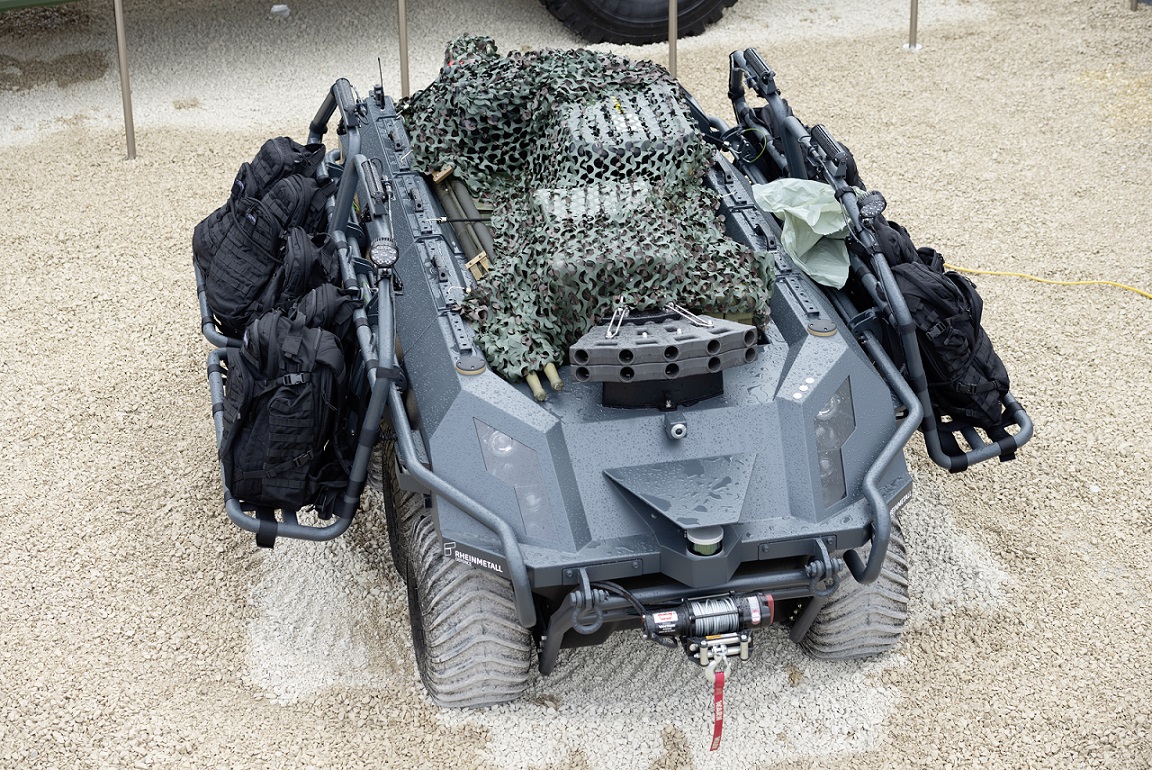This post is also available in:
 עברית (Hebrew)
עברית (Hebrew)
A collaborative effort launched by defense giant Rheinmetall is underway in Australia to develop advanced sovereign robotics and automated vehicle technologies that will create a local automated military vehicle capability. The Autonomous Combat Warrior (ACW) program is expected to lead the Australian development of next-generation automated combat vehicle technologies for integration into the family of Rheinmetall vehicle platforms.“ACW’s goal is to fundamentally change the way in which land vehicles support military operations by transforming a vehicle from tool to teammate to provide currently unachievable levels of soldier protection, support and tactical advantage,” said Rheinmetall Defence Australia Managing Director Gary Stewart.
Under the ACW program, Rheinmetall’s Australian, German and Canadian development teams will work alongside research teams from Australia’s Defence Science and Technology (DST) group, the Australian Commonwealth Scientific and Industrial Research Organisation (CSIRO), Queensland University of Technology (QUT) and the Royal Melbourne Institute of Technology (RMIT).
Interested in learning more about advanced unmanned vehicle technologies? Attend the AUS&R Unmanned Systems and Robotics Conference and Exhibition on September 6, 2020
The aim of the ACW program is to develop self-driving, i.e. autonomous, vehicles supported by AI-enabled technologies. Rheinmetall Canada has already developed such a system, the eight-wheel drive Mission Master vehicle, which incorporates an autonomous driving vehicle capability.
According to the company’s statement, this autonomous driving vehicle capability, or “A-kit,” integrated into the Mission Master provides the base software architecture for all future stages of the ACW research program and provides the autonomous capabilities including robotic vehicle control (robotic control or semi-autonomous); ‘follow me’ control (semi-autonomous); simultaneous localization and mapping; autonomous waypoint navigation (semi or full autonomous); and GPS allowed/denied navigation (semi or full autonomous).
The A-kit could be used for a range of different land vehicles and will likely serve as basis for further research. Two Mission Master vehicles are already in Australia. Two Wiesel 2 digital vehicles with drive-by-wire architecture and the A-kit package are expected to arrive in the country later this year for evaluation and testing.
The Australian Defense Force (ADF) over the past two years has shown a growing interest in semi-autonomous and autonomous land platforms for the military. However, there are manifold concerns about the eventual deployment of such systems. Also, the Australian DoD is working on updating the ADF’s guiding military doctrine document regarding the use of AI-enabled weapons systems.
According to the statement, Rheinmetall “does not develop, manufacture or market fully autonomous weapon systems [and] rejects fully autonomous weapon systems that deprive humans of the power to decide whether or not to use weapons against other humans.” There is still no agreed-upon international definition of what constitutes a fully autonomous system or how it is separate from, for example, automatic weaponry.
Interested in learning more about advanced unmanned vehicle technologies? Attend the AUS&R Unmanned Systems and Robotics Conference and Exhibition on September 6, 2020


























